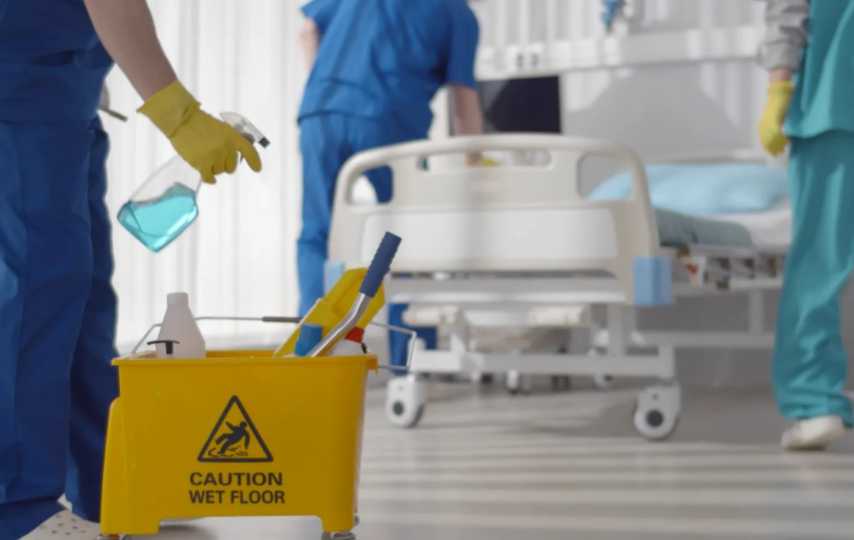In healthcare settings like mental health facilities, infection prevention and management teams are involved in the selection of items for finishing, for example, flooring. Many of them come from a medical NHS background. They use their experience and expertise to provide suggestions for non-clinical settings, which are healthcare facilities that need different interior and design methods.
Carpeting is one of the cheapest flooring options. It is also used in many health facilities, but they are only in some of the vast majority. While they are simple to install, keeping carpets clean requires the proper routine maintenance and preventative measures to avoid damage. Wash effectively and get rid of allergens and dust from the carpet and air.
There are many benefits of carpeting in medical areas. Carpeted floors can enhance the quality of life and create a healing environment. Read more info here!
Carpet selection
The appropriate carpet can create waiting areas, meeting rooms, and other areas prone to traffic more peacefully, healthierly, and safely. The best type of carpet for hospitals can be commercial-grade, high-density nylon. This carpet is extremely durable and stain-resistant; it decreases the risk of spills spreading onto the floor and is also easier to wash than other fiber types.
It’s important to remember that the bulk of dirt that enters the home from outside is buried in the carpet 30 feet away from the entranceway.
Getting your carpets deep cleaned for health purposes
Carpets require a daily and weekly cleaning by a maintenance team. They also require periodic deep cleaning. This can extend the lifespan of carpets and keep them looking clean, and, perhaps most importantly, it helps reduce the possibility of patients getting sick to an absolute low level. There is a way to create and apply regular deep cleaning routines that provide the most healthy and clean outcomes by outsourcing surface cleaning to professionals.
Deep Cleaning Carpets The Primary Methods
The method used by the service provider in managing the space will consist of one or more of the three most commonly used methods of cleaning carpets using a professional method following a thorough vacuuming that uses low moisture extraction, hot water, and dry cleaning.
Low moisture: This technique is ideal for cleaning in between more extensive clean-up extracts.
Wet extraction: It is a great option for cleaning up after a regular period or for regular maintenance. It’s a compromise of sustainability and efficiency. Wet extraction uses natural ingredients with less environmental impact, using the most water.
Dry extraction: Dry extraction is the most durable long-term carpet solution and environmentally sustainable option. Dry extraction keeps the environmental footprint of the building to a minimum and helps reduce VOCs (volatile organic compounds) in work environments. Click here for more details!
Germs and Bacteria: How to Minimize
After vacuuming, regular deep cleaning keeps carpets in good health and clean. According to the U.S. Environmental Protection Agency, only hard surfaces can be cleaned. Disinfectants are also listed on the EPA-List N for cleaning carpets and soft surfaces.
They can be applied using heat extraction. In order to clean the floor properly, the service provider should follow the chemical manufacturer’s guidelines on the labels regarding application, dwell time, and diluting rate.
Antimicrobial treatments also can assist in prolonging the lifespan of carpets.
Microorganisms play a role in our everyday lives and include different species. They comprise fungi, bacteria, yeast, algae, and yeast. All of them can be found wherever temperatures, humidity, and food resources are present.
Certain species are beneficial and a vital element of our natural environment. Others may cause serious damage, such as defacement, damage to surfaces, or rotting staining. Health problems range from simple uncomfortableness to physical irritation or reactions to infection and toxic reactions.
Carpets are also required to be maintained by microscopic arthropods, such as mites. Mites are connected to dirt and dust since their presence in carpets is connected to human allergies.
The capability to make carpets and floors impervious to microbial contamination offers advantages and can be useful in various applications and markets where carpeting is utilized.
Carpets are less likely to transmit pathogens to your hands than other surfaces.
Every flooring, regardless of whether it’s carpet or hard flooring, if it isn’t maintained correctly or engineered to prevent an increase in bacteria, could be susceptible to the growth of fungi and mold, which are the primary reasons for odors in flooring.
How often should the carpets in health centers be cleaned?
Carpets need to be cleaned professionally and sealed at least every six months. Many establishments do this each quarter; if not, it is a month, then every month. Carpets must be cleaned in an ongoing maintenance program. Additionally, areas with abundant traffic, such as hallways and entryways, should be cleaned frequently.
The carpet can be repaired and re-used over time.
It is essential to keep your carpets clean to prolong their life. This involves three steps:
Regular and thorough vacuuming.
Be sure to use an industrial-grade vacuum with a beater bar, an adjustment, and microfiltration. A quality vacuum is worth the cost. Based on the amount of traffic, it’s recommended to vacuum each week, at least in areas with a lot of traffic. Typically, bag-style vacuums are the ideal option. The bags need to be cleaned once they’re about two-thirds full.
Professional extraction
Cleanings are conducted once per quarter in areas frequented and, at minimum, every six months in all other situations. Be sure to choose an organization that uses non-toxic, safe cleaning products and offers sanitizers and Carpet protection solutions. The drying time should be completed within just a few hours. The ideal time is between two hours to prevent the growth of bacteria and mold and reduce discomfort for patients and residents.
Spot cleaning, surface cleaning
Spills and spots are likely to happen. The sooner you care for the problem, the more easily it can be removed. If spots are discovered, getting rid of them as quickly as possible using the right spot-cleaning products is important. Many cleaning companies provide regular spot-cleaning services as part of their regular maintenance plan.
Cleaning up spills can be difficult to avoid, so be wary of cleaning products with a lot of soaps or surfactants, which leave behind a substance that draws dirt. The most effective initial step is to clean any new spill or spot with a white, dry cloth to remove any extra fluids and prevent them from settling deeper into the carpet’s fibers.








